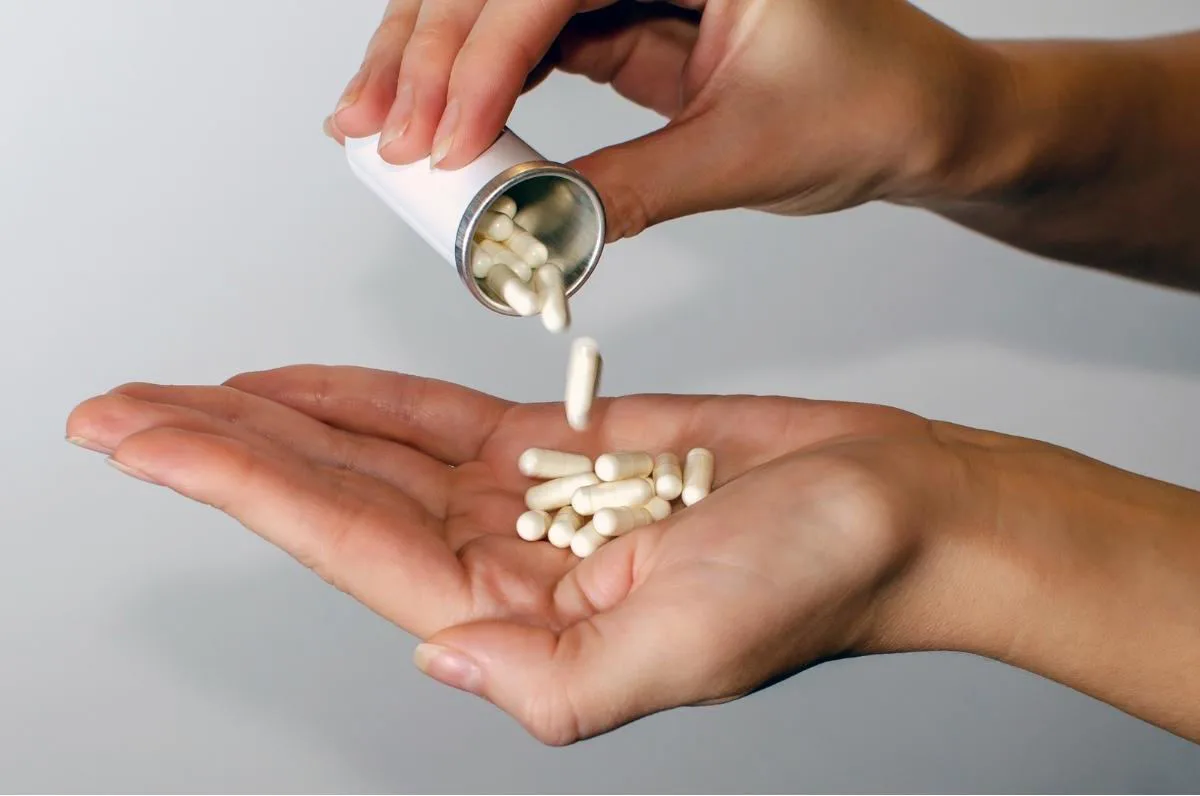When it comes to choosing probiotics, there are a lot of options out there. With all of the different brands and products available, it can be difficult to know which one is right for you. In this blog post, we will discuss the different types and forms of probiotics, what to look for in a probiotic and how to choose the right one for your needs. We will also talk about the benefits of taking probiotics and some tips for getting the most out of them.

Selecting Probiotics
Whether you’re looking for good quality probiotics for adults or your kids, almost everyone I know have complained of difficulties when it comes to picking probiotic supplements.
Probiotic supplements come in many different forms, such as capsules, tablets, powders, and liquids, but you can’t determine which one is best for you. There are also many different strains of probiotics, and each one has its own set of benefits. Whether you want to complement your anti-inflammatory diet or to help you get rid of allergies or improve immune system, there is a probiotic strain that can help. Therefore before choosing a probiotic supplement you need to know exactly what your health goal is and what makes a good quality probiotic.
Here are some quality check tips on how to choose a probiotic that’s right for you, and how to get the most out of your probiotics!
What To Look For In a Probiotic Supplement
- CFU Count: choose a probiotic that has at least 108-109 CFU (or 1-10 billion) viable cells. Survival through the gastrointestinal tract is not guaranteed, so it’s more likely you’ll benefits from a larger dosage.
- Check the probiotic strains: choose the probiotic with strains that have been clinically shown to benefit a specific disease. Some probiotics are better for gut health, while others may be better for immune system support.
- Check the added ingredients: avoid probiotic supplements that contain fillers or artificial ingredients (excipients like microcrystalline cellulose or maltodextrin are the most common);
- Formulation and delivery system: choose a probiotic supplement that is formulated for easy absorption and delivery to the gut. Choose a probiotic that has a multi-layer micro-encapsulation designed to ensure shelf-stability and viability through digestion.
- Quality assuring: best probiotics should be third-party tested (each batch) for potency and for bacterial contamination. Live probiotics must be shipped in a temperature controlled package, to preserve the product potency.

What To Look For When Buying Probiotics
Single-Strain Probiotics Or Multi-Strain
Choice of an appropriate probiotic should be based, not on the number of strains in the product, rather based on disease-specificity for efficacy.
For example for preventing adult antibiotic-associated diarrhea Lactobacillus species (acidophilus, casei, rhamnosus and reuteri) were found to be efficient. As for digestion and immune support the Bifidobacterium species were founds to be more beneficial.
Meanwhile the Lactobacillus species such as salivarius, fermentum, plantarum, paracasei have been associated with clinical improvement of skin conditions such as atopic dermatitis and psoriasis.
Moreover, a beneficial effect in alleviating food allergies has been proven for the probiotic mixture of Lactobacillus species (casei, lactis, acidophilus, salivarius) and Bifidobacterium species (infantis, lactis and longum).
A brief comparison on the functions of the different species of probiotics can be found here.
The best thing to do is look for probiotic supplements with specific strains based on your needs and health conditions. In essence the correct strain, dose and combination is much more important.
Unfortunately currently there are lack of studies directly evaluating a multiple-strain combination versus a single strain, but there is clearly enough evidence that certain bacteria have a larger spectrum of benefits than others.
Number of Live Cells in A Dose (CFU Count)
Many probiotic supplements contain 1 to 10 billion CFU per dose, but some products contain up to 100 billion CFU or more. This stands for colony forming units, and it indicates how many live bacteria are in each capsule.
Studies have shown that at least 108-109 (or 1-10 billion) viable cells must reach the intestine for health benefits to be achieved for the patient.
Because probiotics must be consumed alive to have health benefits and they can die during their shelf life, you should look for products labeled with higher number of CFU, AND the specification whether that number was recorded at the end of the product’s shelf life or at the time of manufacture.
Storage: Shelf-stable or Refrigerated Probiotics
Because probiotics are living microorganisms, properly storing them is key.
When it comes to storage, there are two main types of probiotics: shelf-stable and refrigerated. Shelf-stable probiotics do not need to be kept in the fridge (they’re freeze-dried) and have a longer shelf life. Refrigerated probiotics must be kept in the fridge and have a shorter shelf life.
Which one you choose depends on your needs and preferences. If you want a probiotic that you can take with you on the go, shelf-stable is probably the way to go. If you are looking for a probiotic with the highest potency and effectiveness, refrigerated is the best option.
Formulations and Delivery System
Some probiotic supplements come with a targeted delivery system like enteric coated capsules or extended release capsules, that helps the bacteria survive stomach acids so that they can reach the intestines alive.
Many formulations tend to deliver species of probiotic bacteria that have more gastro-resistant properties compared to other species. For example bacteria. Lactobacillus spp. tend to have a greater resistance to gastric acid than others species such as Bifidobacterium spp. therefore are found more often in probiotic formulations.
This is especially important for those who have trouble digesting supplements or who have gastric conditions. If you want to make sure that your probiotic supplement is effective, look for one with a targeted delivery system.
Source
Additionally, you want to make sure that the probiotic supplement you choose is from a reputable company. This ensures that the product is high quality and effective. Look for a company that uses third-party testing to verify the potency and purity of their probiotics.
Benefits of Taking The Right Probiotics
Taking probiotics can offer a lot of health benefits. They have been shown to improve gut health and digestion, reduce symptoms of food intolerance and allergies, support the immune system and reduce inflammation. Furthermore probiotics can also help you to absorb nutrients better which specifically beneficial for those that are not able to digest the food properly and suffer from malnutrition.
Best Quality Probiotics By Purpose
- Best probiotics for gut health and immune support: Garden Of Life Primal Defence Ultra (15 Billion CFU) or Ancient Nutrition Probiotics (100 Billion CFU)
- Best probiotics for BV (bacterial vaginosis) & vaginal health: Happy V (20 Billion CFU) or Renew Life Women’s Probiotics (90 Billion CFU);
- Best probiotic for constipation: Renew Life, Probiotic Return to Regular (20 Billion CFU)
- Best probiotic for candida: Floracor-GI Candida Cleanse
- Best probiotic for leaky gut: Pure Encapsulations Probiotic G.I. Hypoallergenic (10 Billion CFU)
- Best probiotic for SIBO: SBO Probiotics Ultimate by Ancient Nutrition (50 Billions CFU)
- Best probiotic for pregnancy and breastfeeding: Garden of Life Probiotics Once Daily Prenatal (20 Billion CFU);
- Best probiotics for gluten intolerance: Ora Organic Probiotics with Prebiotics (16 Billion CFU);
- Best probiotic for histamine intolerance: Seeking Health | ProBiota HistaminX (10 Billion CFU);
- Best probiotics for UTI: Garden of Life Probiotics Urinary Tract+ (50 Billion CFU)
- Best probiotics for kids: Garden of Life Dr. Formulated Probiotics (5 Billion CFU)
- Best probiotics for infants and newborns: BioGaia Protectis Probiotics Drops
- Best Probiotic with extended release (targeted controlled release): Toniiq (200 Billion CFU) or DS-01™ Daily Synbiotic by Seed.
Additional Tips For Getting The Most Out Of Probiotics
Proper Storage
Don’t remove your supplements from the packaging until you’re ready to ingest them. Don’t keep the probiotics in pill dividers or ziploc bags for later use. Sometimes a higher humidity or temperature can kill them.
Take your probiotic at the right time
Probiotic intake before, during or after a meal can influence the survival rate significantly. For example, taking your probiotics when your stomach acid levels are lower in concentration (meaning empty stomach) can help ensure that more healthy bacteria survive and colonize the gut.
Making sure the transit time is short also increases their survival chance. Prolonged exposure to stomach acid can diminish the survival rate of probiotics, so it’s important to consume them 30 minutes before a meal, or 2-3 hours after.
Consume probiotics with prebiotics
Prebiotics are plant fibers present in vegetables, legumes, fruits and whole grains that promote the growth of probiotic bacteria in your gut. Therefore, consuming probiotics with prebiotics can help to increase their effectiveness.
Eat probiotic-rich foods
You can also get probiotics from probiotic-rich foods, such as yogurt, red cabbage sauerkraut, beet sauerkraut, fermented carrot salad, pickles, kimchi, miso, and kefir. The best way to make sure you are getting enough probiotics in your diet is to eat probiotic-rich foods AND take a probiotic supplement.

Probiotic Supplement FAQs
As long as you need them, but keep in mind that the gastrointestinal colonization of orally administered probiotics seems to be temporary. Meaning bacteria from a probiotic supplement is most likely to diminish in 1-2 weeks after you stop taking them.
Some health experts recommend taking them first thing in the morning, on an empty stomach like 30 minutes before a meal or 2-3 hours after. This gives the probiotics a chance to reach your intestines pretty quick, where they can start working in a less harsh environment. Other experts say that it doesn’t really matter when you take probiotics as long as you keep a healthy diet rich in prebiotics (which is basically the food for probiotics).
It depends on your health goals. According to a scientific review, if you’re taking probiotics for diarrhea, you can start seeing results in as little as 2 days. And if you’re trying to improve your gut health or immunity then it could take weeks or months.
Recent research suggests that taking probiotics on a daily basis may not be necessary. The human gut contains a complex ecosystem of bacteria, and it’s believed that consuming the same probiotic supplements daily can disrupt this delicate balance. So if you’re taking probiotics purely for preventive reasons, you should take a break and let your gut bacteria regulate themselves.
Most health experts recommend rotating probiotics every few months. This allows your body to build up a tolerance to the probiotic strains, and it also ensures that you are getting a variety of different strains.
What Are The Causes That Damages Gut Bacteria
- Prescription antibiotics (decreases microbiota diversity);
- Medications like anti-cholesterol drugs, antidepressants and sleeping pills they penetrate the intestinal wall;
- Tap water, chlorinated drinking water – chlorine kills all bacteria, regardless of whether they are good or bad;
- GMO foods (read this article from Journal of Biomedicine and Biotechnology);
- Diet high in grains and alcohol (drives inflammation);
- Pasteurized foods, pesticide and herbicide use for growing food;
- Artificial food coloring and additives;
- Exposure to heavy metals;
- Excessive consumption of carbohydrates and sugar – pathogenic bacteria feed on sugar.
Once your system has a deficit of necessary “good” bacteria, it can become a breeding ground for bad bacteria, yeast, viruses, fungi and parasites. Many people with health issues, such as autoimmune disease – thyroid imbalances, chronic fatigue, joint pain, skin disorders, frequent colds and flus and many other conditions don’t realize that these illnesses originate in the gut.
Bottom Line
When you are picking a probiotic, it is important to consider what you want to use it for. Different strains perform different functions in the body and can help support different health goals. Choosing a probiotic tailored to your health needs will be most beneficial for your overall health.
You Might Also Like
Disclaimer: The information, including but not limited to, text, graphics, images and other material contained on this website are for informational purposes only and should not be considered to be a specific diagnosis or treatment plan for any individual situation. Seek the direct advice of your own doctor if you have any questions or issues. Please refer to my full disclaimer for more info.






how
Tuesday 7th of November 2017
It's actually a great and helpful piece of info. I'm glad that you simply shared this useful info with us. Please keep us up to date like this. Thank you for sharing.
HealthyTaste
Wednesday 8th of November 2017
Thank you!